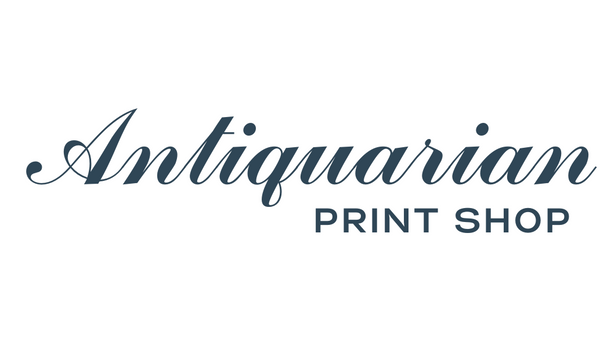Pears transparent soap is a British brand of soap first produced and sold in 1807 by Andrew Pears, at a factory just off Oxford Street in London. It was the world's first mass-market translucent soap. Under the stewardship of advertising pioneer Thomas J. Barratt, A. & F. Pears initiated a number of innovations in sales and marketing. English actress and socialite Lillie Langtry was recruited to become the poster-girl for Pears in 1882, and in doing so she became the first celebrity to endorse a commercial product.[3][4]
Andrew Pears, the son of a farmer, was born about 1770 in Cornwall and moved from his native Mevagissey to London around 1787. He completed his apprenticeship in 1789, established a barber's shop in Gerrard Street in Soho and began to produce cosmetic products. At that time, Soho was a high-end residential area, and Pears' clientele included many wealthy socialites who took pride in their appearance. Pears found that his powders and creams were frequently being used to cover up damage caused by the harshness of the soaps, many of which contained arsenic or lead. Pears began to experiment with soap purification and eventually managed to produce a gentle soap based on glycerine and other natural products. The clarity of the soap gave it a novel transparent appearance, which provided a marketing advantage. To add to the appeal, Pears gave the soap an aroma reminiscent of an English garden. It was first sold in London in 1807.[5]
At the Great Exhibition of 1851, Pears was awarded the prize medal for soap. During the nineteenth century, Pears built a large market for its soap in the United States.[8]
In the mid to late 1950s, each batch of soap, about 12 a day, was tested to ensure the absence of excess alkali or free fatty acid. Production moved to Port Sunlight in the 1960s, when Unilever, successor to Lever Brothers, set up a cosmetic development laboratory on the Isleworth site. A major fire at the site completely destroyed the original factory.
Pears soap is now made in India by Hindustan Unilever, a company in which Unilever now has a 67 percent share.
Pears soap was made using a process entirely different from that for other soaps. A mixture of tallow and other fats was saponified by an alkali. Clearly, this is currently caustic soda (sodium hydroxide), since the ingredients list shows sodium salts of fatty acids, but a chemist reports that in the 1960s, caustic potash (potassium hydroxide) was used. It has not been possible to determine what was used in the early days of the product, as the writings of Francis Pears mention only alkali in industrial methylated spirits. After saponification was completed, the resulting glycerol was left in the batch. Batches were made not in huge pans, but in small kettle-like vessels. As soon as the translucent amber liquid had cooled enough to solidify, it was extruded into opaque oval bars that were cut into bath- or toilet-weight tablets, ready for beginning their long spell in the drying rooms (ovens). The hot liquid soap fresh from the vessel had a total fatty matter (TFM) of 45% compared with the TFMs of 70–80% usual in soaps made by the conventional method. The TFM increased considerably as the alcohol content fell during drying. The concave shape of the soap is formed by shrinkage while the soap is drying, and is not due to deliberate moulding.
The first of the famous Pears soap marketing campaigns used Giovanni Focardi's most well-known statue, You dirty boy!, exhibited at the Exposition Universelle de Paris in 1878. The statue was so popular that Pears purchased the rights to produce copies as advertisements for its soap products. The statues were in terracotta, plaster and metal, and were used in shop counter displays.
From the late 19th century, Pears soap became famous for its marketing, masterminded by Barratt. Its campaign using John Everett Millais' painting Bubbles continued over many decades. As with many other brands at the time, at the beginning of the 20th century, Pears also used its product as a sign of the prevailing European concept of the "civilizing mission" of empire and trade, in which the soap stood for progress.
In the late 19th century, to publicise its products, Pears distributed coins countermarked with "Pears Soap". They were 10-centime French coins, imported by Pears. About the same size and shape as the British penny of the time, the French coins were generally accepted as pennies in Britain.
Lillie Langtry became the first woman to endorse a commercial product, when her famous ivory complexion gained her a contract to advertise Pears soap. Her fee was related to her weight, so it was said that she was paid "pound for pound".
Between 1891 and 1925, Pears issued its now-famous annuals, which are highly collectible. From the early 20th century, Pears was famous for the annual "Miss Pears" competition, in which parents entered their children into the high-profile hunt for a young brand ambassador to be used on packaging and in consumer promotions. Many Miss Pears subsequently entered acting or modelling.
Pears' Cyclopaedia is a one volume encyclopaedia, continuously published in the United Kingdom since December 1897.
Related Tag: Natural History Prints
Source: Wikipedia Pears (soap) - Wikipedia

